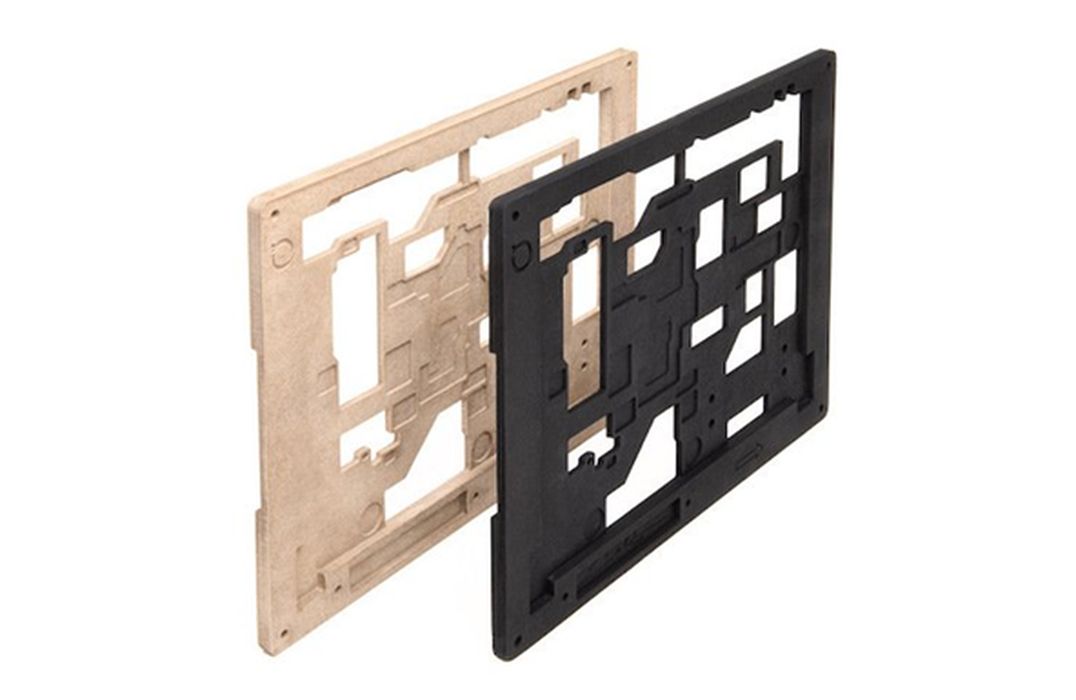
Charles R. Goulding and Jacob Nolan discuss how Owens Corning’s recent acquisition of Masonite and how both companies can leverage 3D printing technology to enhance innovation and product development.
In early February, Owens Corning announced its acquisition of Masonite for US$3.9 billion. The purpose of the acquisition was to strengthen Owens Corning’s position in the building and construction materials industry.
The addition of Masonite’s market-leading doors business creates a new growth platform for Owens Corning, strengthening the company’s position in residential building materials and extending its offering of highly valued products and brands. Leveraging Owens Corning’s unique commercial capabilities and proven go-to-market model serving contractors, builders, and distributors, the company expects to build on Masonite’s strong track record of innovation, brand quality, and category excellence to further grow in the doors market.
Owens Corning had sales of US$9.7 billion in 2023 and employed 18,000 people. The company is not shying away from 3D printing and other innovative technologies.
One of the ways Owens Corning is getting involved with 3D printing is by using Ultimaker 3D printers in its innovation labs. This process has colleagues from different places around the world working and creating together. What begins as a sketch becomes an STL file, which in turn becomes a fully functional 3D printed part or prototype. It’s a relatively simple process. Also, it is a process that works, resulting in plants continuing to submit requests for 3D printed parts.
Innovation Labs
Owens Corning operates innovation labs in Ohio and France that are dedicated to 3D printing. There, experts who specialize in technology use specific Ultimaker printers. They use Ultimaker S5 and Ultimaker 3 printers to create parts for the organization’s manufacturing plants, as well as its science and technology center, to support Research & Development (R&D). These experts take orders, which are usually in the form of quick sketches, from Owens Corning plants around the world and adapt them so that they are fit to be 3D printed.
Composite-based Additive Manufacturing
Owens Corning, a leading manufacturer of insulation, roofing, and fiberglass composites, utilizes composite-based additive manufacturing to innovate in product development and manufacturing processes. By leveraging this technology, Owens Corning can create advanced composite materials with tailored properties to meet specific performance requirements. This allows them to produce lightweight yet strong components for various applications, including aerospace, automotive, and construction. Through the integration of additive manufacturing into its operations, Owens Corning enhances efficiency, flexibility, and sustainability in their product offerings, driving continuous advancements in the industry.

Prototyping
Prototyping with 3D printing allows Masonite Residential to produce new door handle designs. Instead of waiting weeks or even months for traditional prototyping methods, such as CNC machining or injection molding, they can produce functional prototypes in a matter of hours or days using 3D printing. This rapid turnaround enables their design teams to experiment and test various shapes, sizes, and materials, facilitating a more creative design process. Additionally, 3D printing allows for complex geometries that may be challenging or costly to achieve with traditional manufacturing techniques, giving designers more freedom to explore innovative concepts.
Customization
With 3D printing, Masonite Residential can fulfill customers’ requests for highly customized door designs without difficulty. For instance, if a homeowner desires a door made with a specific emblem, they can work with Masonite Residential to create a digital model of the desired decoration. Using 3D printing technology, this design can then be directly transferred onto the door panel during the manufacturing process, resulting in a one-of-a-kind, personalized product. Additionally, 3D printing enables the creation of specific details and textures that would be challenging or impossible to achieve through traditional methods, allowing for truly unique and eye-catching door designs built to individual preferences.
Tooling and Fixtures
3D printing offers significant advantages in the production of custom tooling and fixtures for manufacturing processes. For example, suppose Masonite Residential needs a specialized jig to ensure precise placement of door components during assembly. In that case, they can design, and 3D print the jig according to their specific requirements. Unlike traditional machining, which often involves lengthy lead times and high costs for custom tooling, 3D printing allows for rapid prototyping and production of custom fixtures at a fraction of the time and cost. Furthermore, 3D printing enables the creation of complex geometries and lightweight structures that may not be feasible with conventional manufacturing methods, resulting in more efficient and convenient tools for their manufacturing operations.
The Research & Development Tax Credit
The now permanent Research & Development Tax Credit Tax Credit is available for companies developing new or improved products, processes and/ or software.
3D printing can help boost a company’s R&D Tax Credits. Wages for technical employees creating, testing and revising 3D printed prototypes can be included as a percentage of eligible time spent for the R&D Tax Credit. Similarly, when used as a method of improving a process, time spent integrating 3D printing hardware and software counts as an eligible activity. Lastly, when used for modeling and preproduction, the costs of filaments consumed during the development process may also be recovered.
Whether it is used for creating and testing prototypes or for final production, 3D printing is a great indicator that R&D Credit eligible activities are taking place. Companies implementing this technology at any point should consider taking advantage of R&D Tax Credits
Conclusion
The acquisition of Masonite better positions Owens Corning to pursue other markets, including the residential building materials market. Both companies can leverage Owens Corning’s 3D printing expertise to advance their products further.
